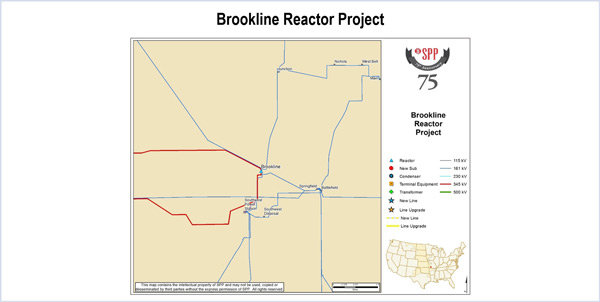By Tom Kleckner
FERC on Friday rejected SPP’s proposed cost allocation for its seams project with Associated Electric Cooperative Inc. (AECI), a Missouri-based collection of six generation and transmission cooperatives.
The commission ruled SPP had not shown that the proposed allocation on a regionwide, load-ratio share basis was “roughly commensurate” with the project’s benefits (ER17-2256, ER17-2257).
The project includes a new 345/161-kV transformer at AECI’s Morgan substation and uprating a related 161-kV line, both near Springfield, Mo. SPP estimated the project, intended to address persistent thermal and voltage problems, would cost $18.75 million. SPP asked FERC to approve a cost-sharing and usage agreement among the RTO, AECI and City Utilities of Springfield — along with Tariff revisions incorporating SPP’s negotiated share of the revenue requirements — in August.
SPP General Counsel Paul Suskie said that although the RTO is disappointed, “we’re undeterred and confident we’ll be able to continue to work … with members to develop an appropriate cost allocation for this and future seams projects.”
“The ability to develop necessary and beneficial transmission improvements along our seams remains a high priority for SPP and its members,” Suskie added.
SPP had proposed to regionally fund the projects, as they solved congestion issues on its side of the seam. The RTO agreed to cover 89.1% of the $13.75 million transformer and 97% of the $5 million uprate, with AECI covering the remainder and being responsible for the projects’ construction, operations and maintenance.
The RTO said it planned to allocate its share of the two projects by inserting their revenue requirements into the annual transmission revenue requirement of its highway/byway regional cost allocation methodology. Highway/byway funding considers facilities of 300 kV or above as highway facilities, with their costs allocated on a regionwide, postage-stamp basis; facilities between 100 and 300 kV are categorized as byway facilities, with two-thirds of the costs assigned to the host zone and one-third allocated regionwide.
Projects below 100 kV are allocated entirely to the host zone, while upgrades that operate at two difference levels — such as transformers — are allocated based on the facilities’ lower operating voltage.
Xcel Energy and Westar Energy protested the RTO’s filing.
Xcel opposed the Morgan transformer’s cost allocation, contending that SPP provided insufficient evidence that the proposed cost allocation reflects its benefits. The company said there is no “default rule” that customers in SPP’s 19 transmission zones “should bear the costs of a transmission facility in cases where the owner of the facility is located outside [the footprint].”
The company also said SPP failed to provide information on the project’s benefits to transmission owners or loads in the Southeastern Regional Transmission Planning (SERTP) region that would justify a broader cost allocation to AECI’s fellow SERTP members.
FERC sided with Xcel’s argument that SPP had not provided specific information on the transformer project’s regionwide benefits and had not offered “sufficient evidence to demonstrate that these claimed economic benefits accrue throughout the SPP footprint.” The commission said the RTO’s own analysis indicated the project does not provide economic benefits to at least 11 of the 19 transmission zones.
Because SPP failed to support its cost allocation, FERC said it did not need to address Westar’s allegation of a lack of transparency regarding SPP’s negotiations with AECI. The utility had argued all affected parties have a right “to analyze the methodology and rationale by which SPP and AECI negotiated and substantiated the cost allocation ratios proposed in the filings.”
The commission said its rejection does not preclude the RTO from proposing an alternative allocation or making another filing that demonstrates the project provides regional benefits.
SPP stakeholders in July reiterated their support of the project, despite a nearly 50% cost increase due to additional work to upgrade the 161-kV line. (See “Board Reaffirms Seams Project with AECI,” SPP Board of Directors/Members Committee Briefs: July 25, 2017.)
The commission in 2015 rejected SPP’s attempt to create a new class of seams transmission projects, saying its plan to identify projects outside the Order 1000 interregional planning process was “too broadly drawn” (ER15-2705). FERC did allow SPP to make filings on a project-by-project basis for non-Order 1000 facilities. (See FERC Rejects SPP Proposal for Seams Transmission Projects.)






